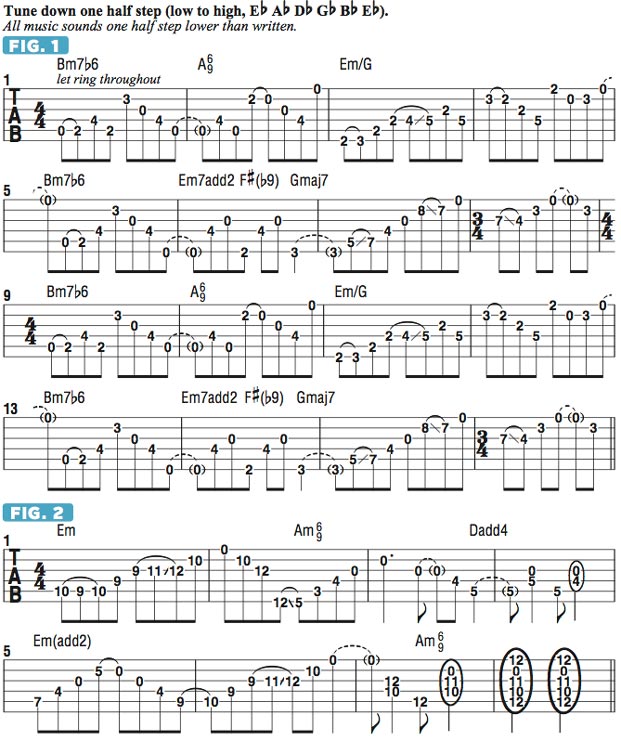Creating Riffs from Arpeggios, and the Intro and Verses to “Priestess”
Walk the line between playing only single notes while also outlining “wide” chord voicings via the use of arpeggios.
The inspiration for writing the primary riffs in “Priestess,” from 2015’s Juggernaut: Omega, was born from trying to find an effective way to walk the line between playing only single notes while also outlining “wide” chord voicings via the use of arpeggios.
The resultant pattern weaves chord tones with other notes that serve to connect the chordal references in a melodic way.
I find this approach to be a very useful and effective compositional device, and encourage you to investigate it! A lot of Periphery’s music is put together in this way, and I think “Priestess” is one of the best examples of using the approach to great results.
FIGURE 1 illustrates the song’s intro/main riff. For this song, my guitar is tuned down one half step (low to high: Eb Ab Db Gb Bb Eb) and, as most people do when playing in this tuning, I just think of the notes as if the strings were tuned to concert pitch, with the understanding that everything sounds a half step lower. I begin with a phrase that I think of as an homage to Pantera’s Dimebag Darrell.
There’s a song on The Great Southern Trendkill called “10’s” that utilizes the same Bm7(b6) chord voicing on the bridge that I use for the opening of the main riff in “Priestess.” This chord may also be analyzed as Gmaj7/B and, for me, the ringing open G string in the middle of the voicing gives it a really beautiful quality. Other guitarists have used this voicing, but I found the manner in which Dimebag used it to be particularly inspiring.
With the middle and ring fingers of the fret hand in place, I begin by hammering on from the open A string to the second-fret B note and play each note in a steady eighth-note rhythm, allowing all of the notes to ring together as much as possible. In bar 2, a lot of open strings are used as the B root note drops down to the open A string, after which I additionally sound the open B, G and high E strings. In this way, I’m weaving chord arpeggiations with single-note lines, resulting in a riff that clearly describes a harmonic environment.
As you play through the remainder of the figure, you’ll see that hammer-ons, pull-offs and finger slides are essential to the proper execution of the phrases, along with sustaining all the notes in each shape as long as possible. The shifts from chord to chord are not too difficult, but it is challenging to play this part up to speed with each note ringing clearly. I think of the entire riff as a long arpeggio that continually develops as it moves along.
All the latest guitar news, interviews, lessons, reviews, deals and more, direct to your inbox!
FIGURE 2 shows the riff I play on the second verse, and here I apply many of the same concepts described in FIGURE 1. Hammer-ons, pull-offs and slides are again essential to the execution of the lines, and the sound of open strings combined with fretted notes creates the overall sound I was looking for. I should mention that this part was originally tracked with a seven-string guitar, but the six-string version demonstrated here accurately represents the riff, with the exclusion of only a few of the low seventh-string root notes.

